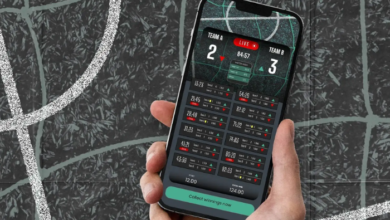
Sports have always been a dynamic field, driven by competition, skill, and the relentless pursuit of excellence. Over the past few decades, technology has emerged as a transformative force in sports, revolutionizing how athletes train, perform, and recover. This evolution is not just enhancing athletic performance but also reshaping the very fabric of sports, from fan engagement to officiating. Let’s explore how these innovations are shaping the future of athletics. Discover the excitement of Babaijebu, a premier website offering a wide range of gaming options. Play and win big with our thrilling games today!
Training and Performance Enhancement
One of the most significant impacts of technology in sports is in the realm of training. Traditional methods, while effective, are now being augmented with advanced technologies that provide athletes and coaches with unprecedented insights into performance.
Wearable Technology: Devices such as GPS trackers, heart rate monitors, and smartwatches provide real-time data on an athlete’s physical condition. This data helps in optimizing training loads, preventing injuries, and improving overall performance. For instance, soccer players can now monitor their sprint speeds, distances covered, and heart rates during matches, allowing for more precise and personalized training regimens.
Biomechanical Analysis: High-speed cameras and motion capture technology allow for detailed biomechanical analysis. Athletes can see their movements in slow motion, identifying inefficiencies and making adjustments to improve technique. This is particularly useful in sports like baseball, golf, and swimming, where technique is crucial.
Virtual Reality (VR) and Augmented Reality (AR): VR and AR are being used to create immersive training environments. Athletes can practice in simulated game scenarios, enhancing their decision-making skills and reaction times. For example, quarterbacks in American football can use VR to practice reading defenses and making split-second decisions without the physical wear and tear of on-field practice.
Injury Prevention and Recovery
Injuries are an inevitable part of sports, but technology is playing a crucial role in reducing their incidence and aiding faster recovery.
Predictive Analytics: By analyzing data from wearables and other sources, predictive models can identify athletes at risk of injury. These models take into account factors like fatigue, muscle imbalances, and previous injury history to recommend preventive measures.
Rehabilitation Technology: Advanced rehabilitation tools such as anti-gravity treadmills, cryotherapy chambers, and electrical muscle stimulation devices are helping athletes recover faster and more effectively. These technologies aid in reducing inflammation, improving blood flow, and accelerating tissue repair.
Telemedicine: Telemedicine platforms allow athletes to consult with medical professionals remotely, ensuring they receive timely care and advice, even when they are on the move.
Game Analytics and Strategy
The strategic aspect of sports has also been revolutionized by technology. Coaches and analysts now have access to a wealth of data that can inform tactics and game plans.
Big Data and Analytics: Detailed statistical analysis helps teams understand their strengths and weaknesses, as well as those of their opponents. In basketball, for example, analytics can determine the most effective shooting spots on the court, influencing offensive strategies.
Artificial Intelligence (AI): AI algorithms are being used to simulate game scenarios and predict outcomes based on historical data. This helps in devising strategies that can exploit an opponent’s weaknesses.
Fan Engagement and Experience
The experience of watching sports has been transformed by technology, bringing fans closer to the action than ever before.
Live Streaming and Interactive Platforms: High-definition live streaming, along with interactive features like multiple camera angles, instant replays, and real-time statistics, provides an immersive viewing experience. Fans can also engage in live chats and social media discussions, enhancing their connection to the game.
Augmented Reality (AR) for Fans: AR apps can enhance the in-stadium experience by providing real-time information on players, stats, and even offering interactive games during breaks.
Smart Stadiums: Modern stadiums are equipped with advanced connectivity, allowing fans to order food, find parking, and navigate through the venue using their smartphones. This seamless integration of technology improves overall fan satisfaction.
Officiating and Fair Play
Ensuring fair play is critical in sports, and technology has made significant strides in assisting officials in making accurate decisions.
Video Assistant Referee (VAR): In soccer, VAR has been a game-changer, allowing referees to review contentious decisions using video footage. This has significantly reduced the number of incorrect calls, ensuring a fairer outcome.
Hawk-Eye Technology: Used in sports like tennis and cricket, Hawk-Eye provides a visual representation of the ball’s trajectory, helping officials make precise decisions on close calls.
Goal-Line Technology: In soccer, this technology determines whether the ball has fully crossed the goal line, eliminating any ambiguity in scoring situations.
Conclusion
The integration of technology into sports is an ongoing process, continually pushing the boundaries of what athletes can achieve and how fans engage with their favorite sports. As innovations continue to emerge, we can expect even more profound changes in the world of athletics, making sports more exciting, fair, and accessible than ever before. The future of sports technology promises a thrilling era of enhanced performance, safer practices, and enriched experiences for athletes and fans alike.



